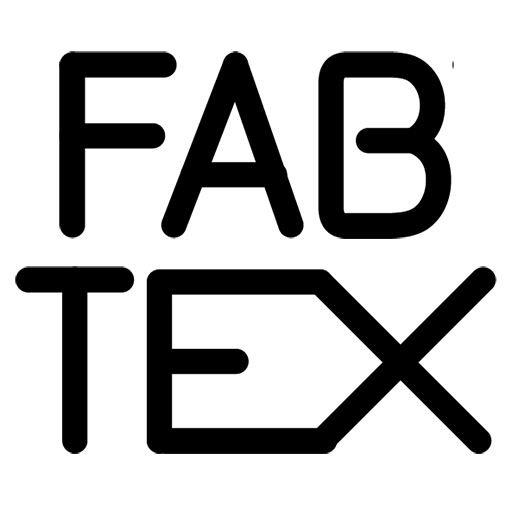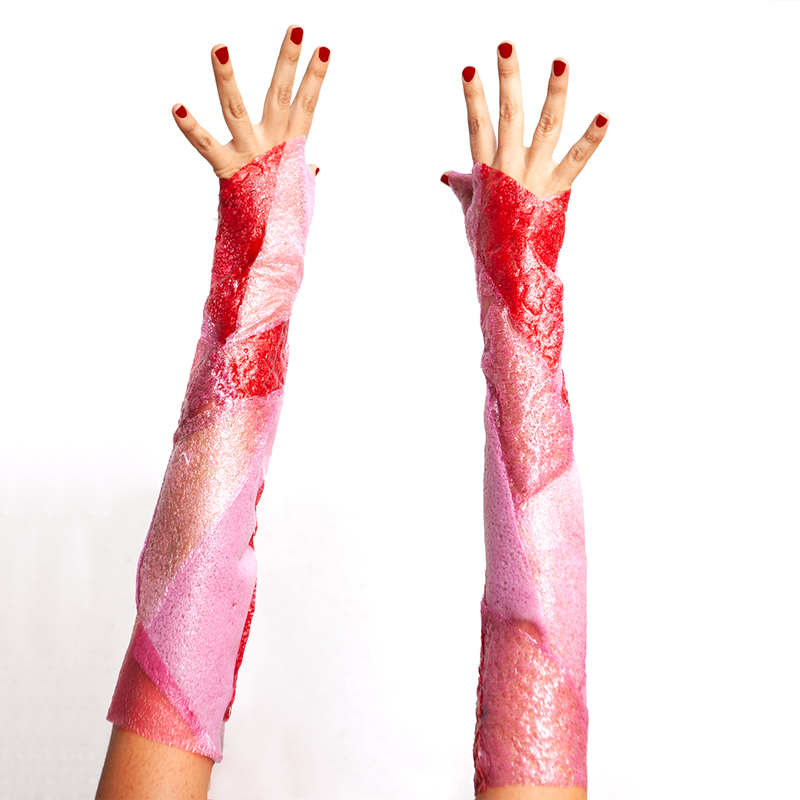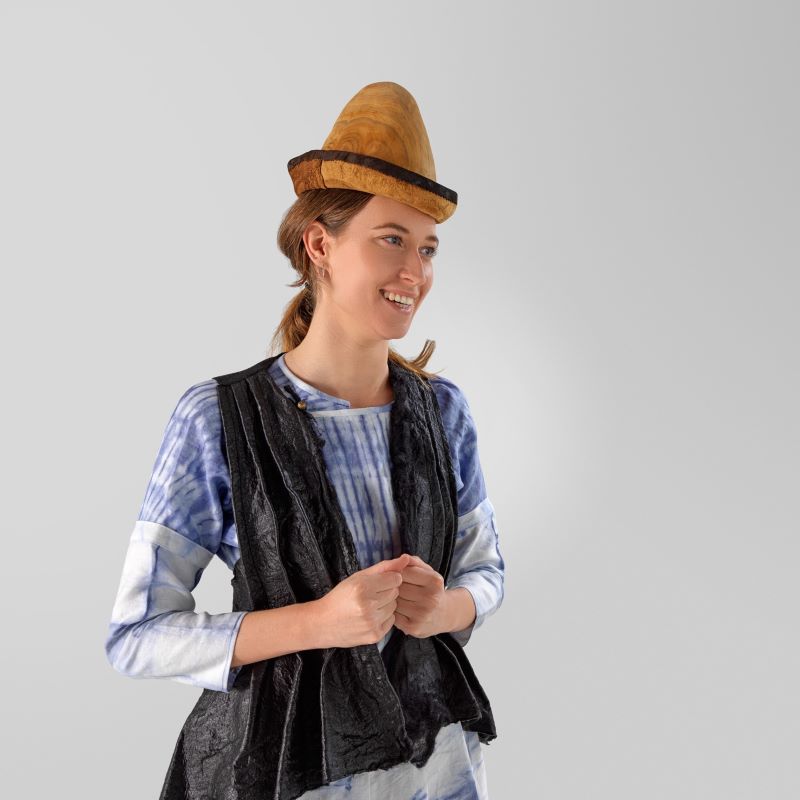In January 2019 I had the amazing opportunity to be invited for an artistic residency and workshop at DLab USFQ in Ecuador by my very good friend and amazing researcher Cristina Muñoz to work together on Biofabricated textiles based on starch and natural colorants.
Our collaboration began in 2017, through a collaboration fund from the Universidad de San Francisco, on biomaterials applied to textile fabrication that allowed us to work in distance as co-researchers together with a team of chemical engineers and designers from Ecuador. I was in charge of the methodological supervision in prototyping bio-fabrics and assessing the development of the biomaterials, the fabrication techniques and the product design. As the conclusion of the project, I was invited for a three week artistic residency together with a series of workshops and a public lecture at USFQ.
During the residency we explored developed further the recipes of starch based bioplastics, explored natural colorants, codesigned a series of garments and established the fabrication protocols for producing them. We experimented with cochineal, since Ecuador has large production of this natural red colorant, whose primary constituent is carminic acid, that is made of the dried and pulverized bodies of female cochineal insects and is used to color food and cosmetics. (freedictionary)
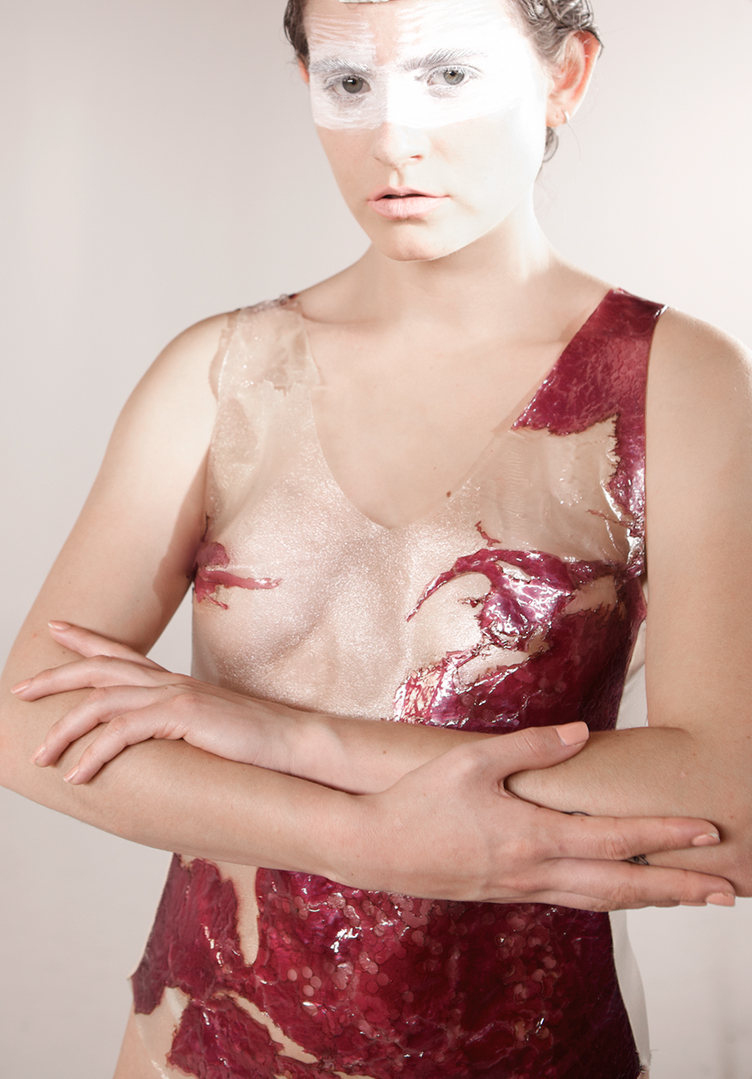
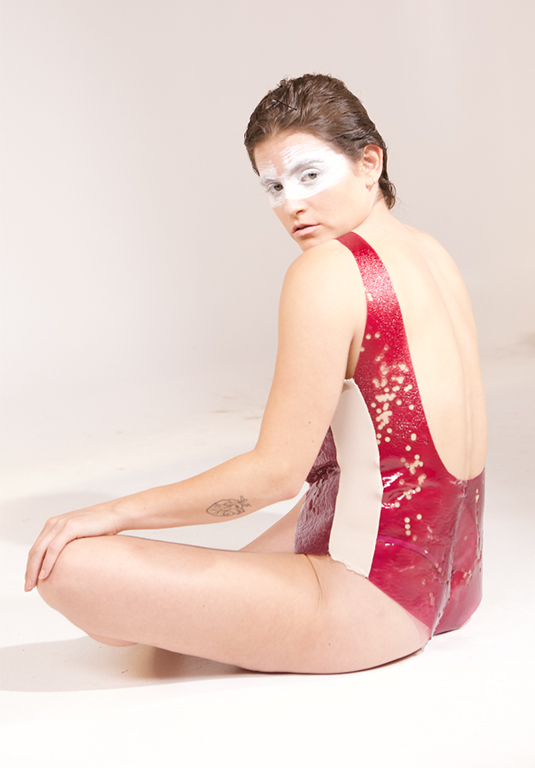
The pattern of this soluble swimsuit aims to bring awareness around the “plastic floating islands” that travel in the open sea.
The pattern was made by using a database by the Sea Education Association showing the urgency
Floating plastic debris sampling in the North Atlantic, by the Sea Education Association.
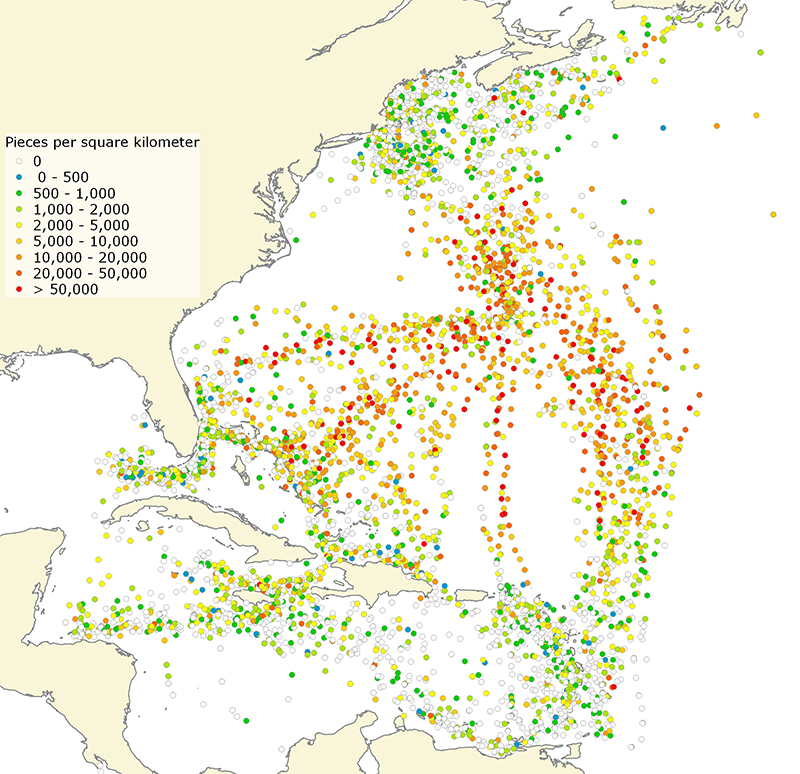
You can see this data in this interactive map and read the article here
The different laser cut layers for the swimsuit>
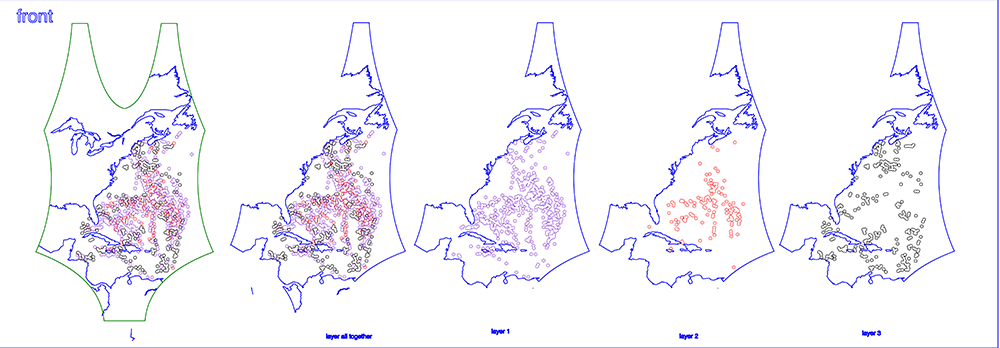
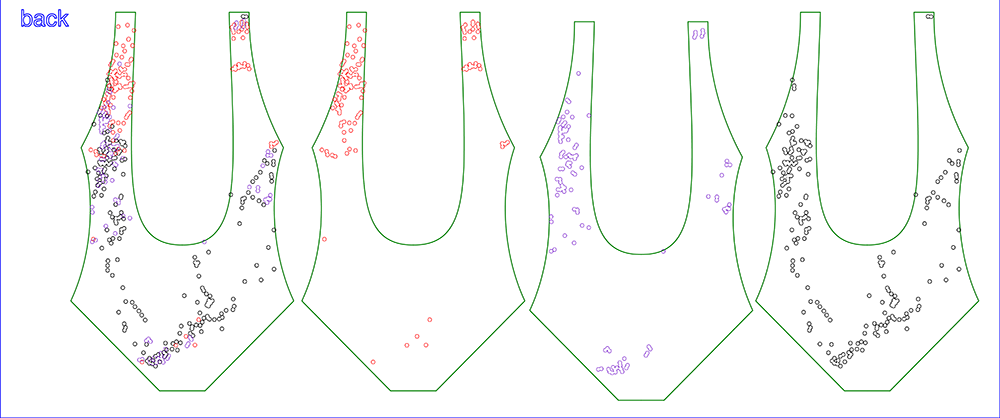
Starch based Bioplastic with Cochineal (top + skirt)
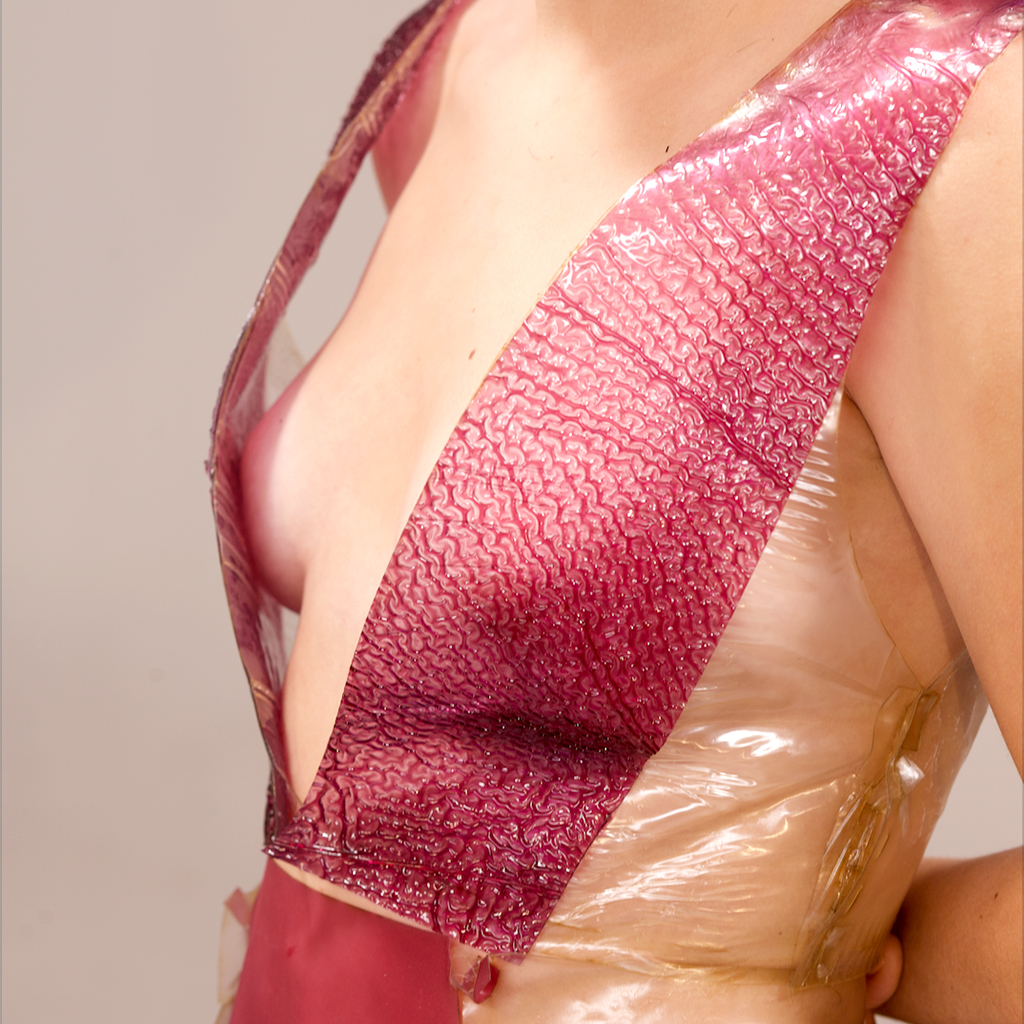
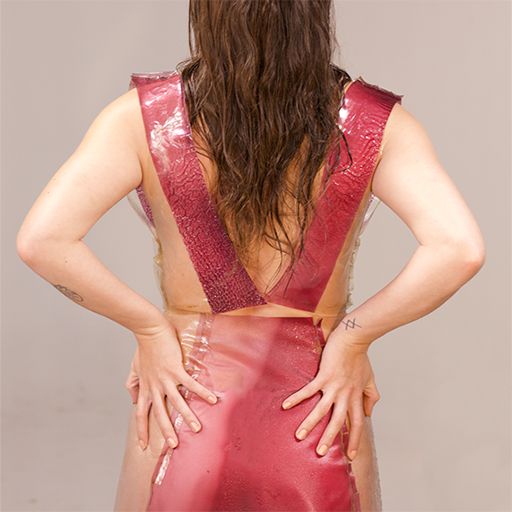
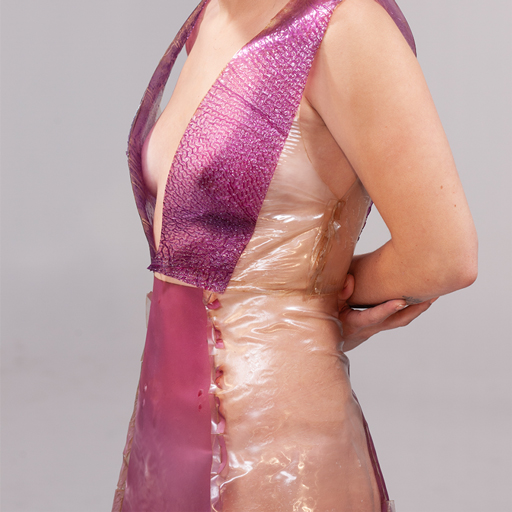
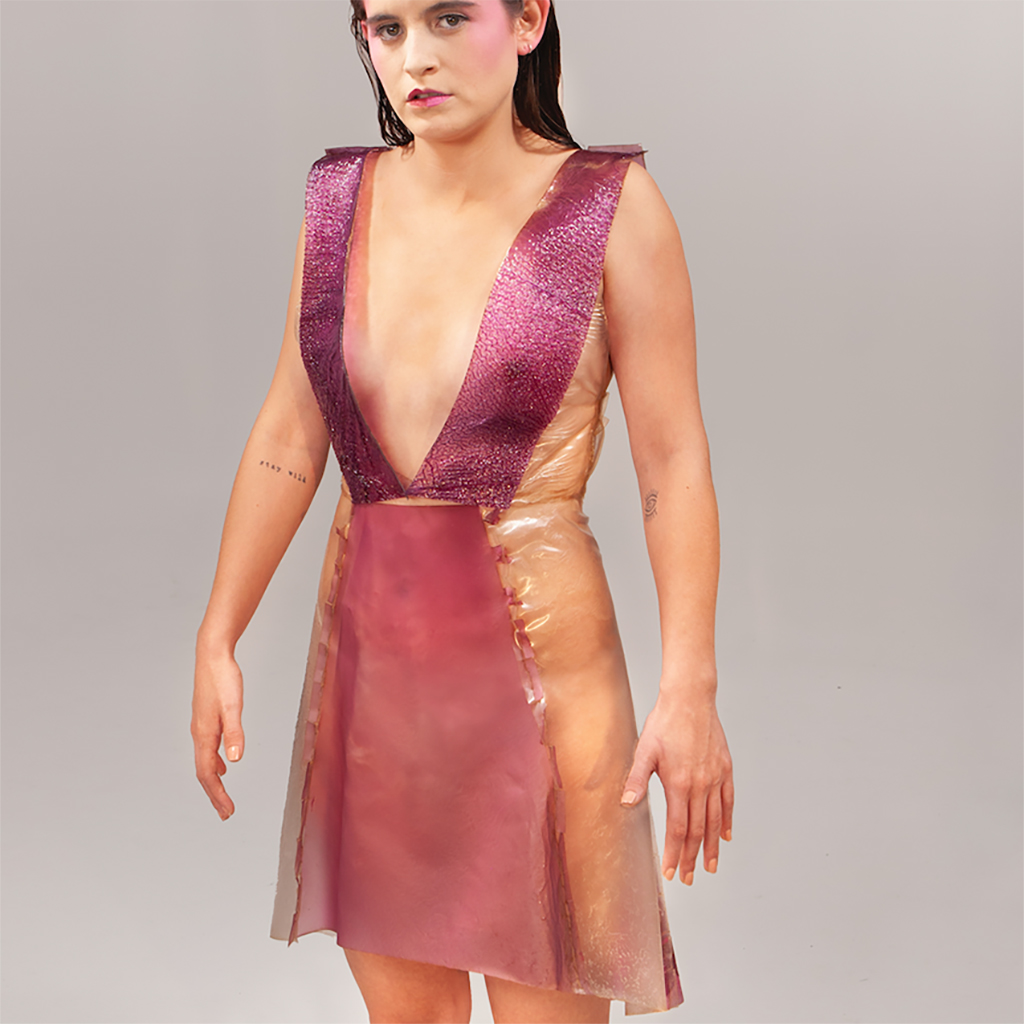
You can find the downloadable patterns at OS circular fashion
Research references
- http://www.worldfuturefund.org/Reports/oceansdestruction.htm
- https://abcnews.go.com/International/great-pacific-garbage-patch-massive-floating-island-plastic/story?id=53962147
- https://www.youtube.com/watch?v=-qcIllBI9iE
- https://www.adventurescientists.org/microplastics.html
- https://www.news.com.au/technology/environment/conservation/global-population-implored-to-beat-plastic-pollution-on-world-environment-day/news-story/3666e012c6990a2ef3bfdab2e842ac91
- https://www.adventurescientists.org/microplastics.html
- http://marine.copernicus.eu/eyewitnessing-plastic-pollution-in-oceans/
- https://www.sea.edu/sea_research/ocean_plastics_marine_pollution
- http://www.oceanwatch.org.au/latest-news/blog/5-awesome-programs-tackling-ocean-plastics/
- https://www.news.com.au/technology/environment/conservation/global-population-implored-to-beat-plastic-pollution-on-world-environment-day/news-story/3666e012c6990a2ef3bfdab2e842ac91
- http://discovermagazine.com/2008/jul/10-the-worlds-largest-dump/
- https://www.sciencedirect.com/science/article/pii/S0025326X17304435
- http://plasticadrift.org/
- http://oceanmotion.org/html/impact/garbagepatch.htm
- http://iopscience.iop.org/article/10.1088/1748-9326/7/4/044040
- http://dumpark.com/seas-of-plastic-infographic/
- http://www.bluebird-electric.net/oceanography/Plastic_Ocean_Pollution_Gyres_Garbage_Patches.htm
- https://www.youtube.com/watch?v=0yG77rRXZDM
- https://www.sciencedirect.com/science/article/pii/S0025326X17304435#f0015
- http://blogs.discovermagazine.com/80beats/2010/08/19/the-mystery-of-the-missing-plastic-in-the-atlantic-garbage-patch/#.XDVVk89KjdQ
